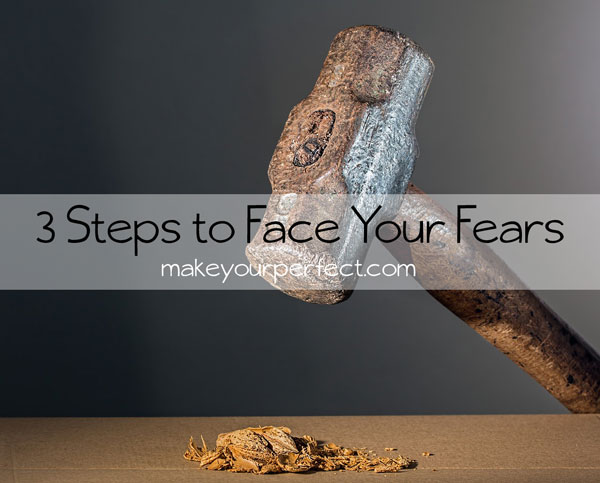
Yesterday, I shared what happens when you take something off of your to-do list.
Today, I’m helping you get over your excuses, face your fears and actually do that.
When I told you that you could take something off your to-do list in order to feel less overwhelmed and take some time for yourself, you probably shook your head. You probably read half of the post and then clicked off of it, telling yourself that I’m crazy, that everything on your to-do list absolutely HAS to get done by the deadline.
Or what?
Your life will implode?
Little aliens will invade your house at night and take you to their leader?
You’ll end up homeless?
Your kids won’t survive?
It’s Not That Dramatic.
That’s the thing. Have you ever stopped to consider what will really happen if you don’t do that thing that you ABSOLUTELY HAVE to do ?
Probably not. You let your mind go to the aliens, death and homelessness, but you don’t actually stop to think about what the realistic outcome will be.
We Let Fear Stop Us Because We Don’t Like the Unknown.
So if you don’t know what’s going to happen when you drop that chore that you dread or take something off of your #1 important list, you’re likely to just keep doing it.
The fear of the unknown is scarier than what will really happen.
Because you’re not going to get abducted by aliens or end up homeless. Your kids will be perfectly fine.
Define the Outcome

Step 1:
Instead of worrying about the outcome, define it. Tell yourself what will really happen if you don’t do that very important thing. Even if it does seem a little scary. Make yourself clarify the result. That’s face your fears 101.
Step 2:
Tim Ferris, author of The 4-Hour Workweek, says that the next step is to weigh the severity of the outcome that you just defined.
So do this – Ask yourself how much of an impact that outcome will permanently have on your life, on a scale of 1 to 10.
You’ll probably find that the permanent impact is low.
Ferris also encourages you to come up with a plan for fixing the impact. In my example from the previous blog post, I explained that I totally ignored some deadlines that would bring in income. I might have lost out on $100 that day. In the grand scheme of things, the permanent impact of that was still low. I’d rate it a 3. But then I realized that I could come up with a plan for fixing the impact. If I really needed to make up that $100 at any point, I could simply ramp up my writing, and finish a few extra articles in the next few days. It would involve maybe an extra 30 minutes a day. Not a big deal.
Plus, it wasn’t bill-paying time. It wasn’t like I needed the money right then for something specific. So I let it slide.
Don’t get me wrong—I don’t advocate putting things off just to pile more on your plate later. But I was pretty certain that at this point, $100 wouldn’t make or break me, and the plan for making it up if I determined that it would, in fact, break me down the road wasn’t such a big deal after all.
And that’s just the thing. It wasn’t such a big deal after all.
But I would never have known that if I hadn’t tried.
Which brings me to Step 3.
Step 3:
Ask yourself what is the impact that doing the thing I’m afraid of doing will have on my life?
If we’re still talking about taking something off of your to-do list, the answer is probably, “I’ll feel free for an hour today” or “I’ll be able to relax enough so that I don’t freak out on my kids.”
And if that impact is greater than the negative impact, why the hell are you not doing it?
Just saying.






